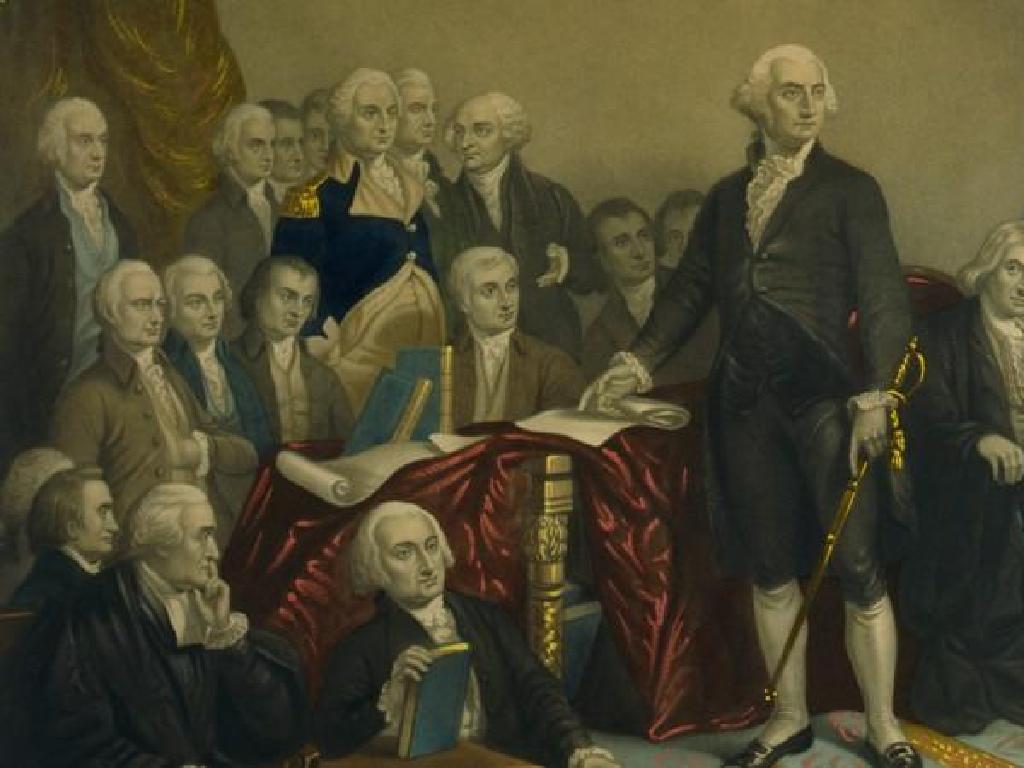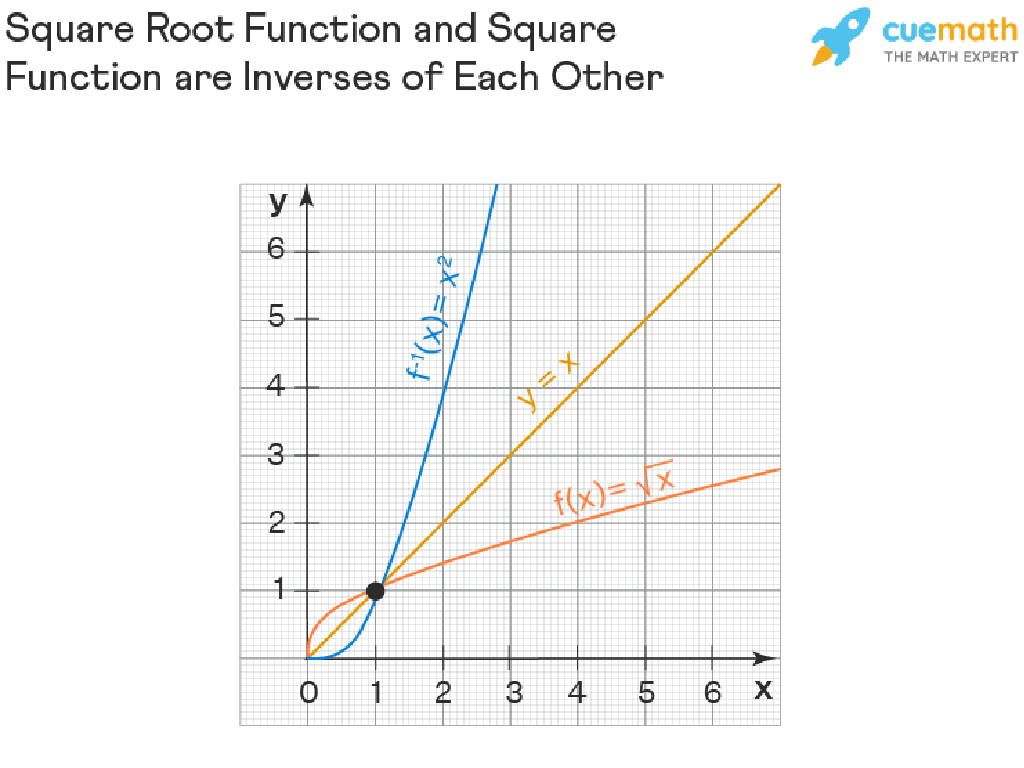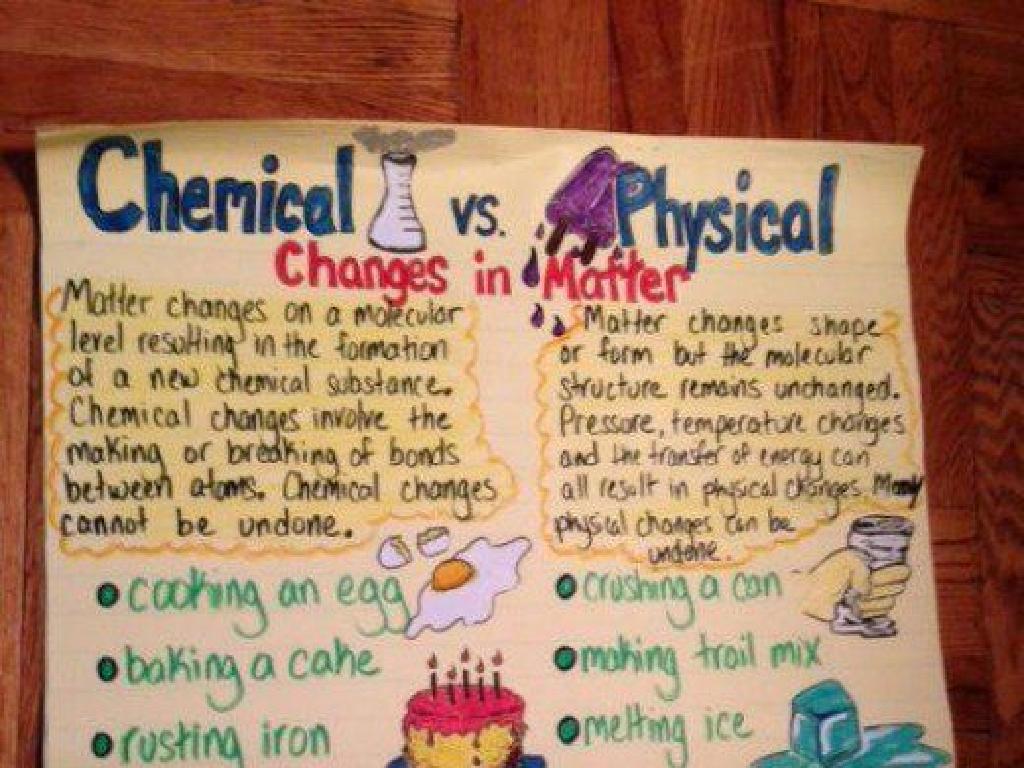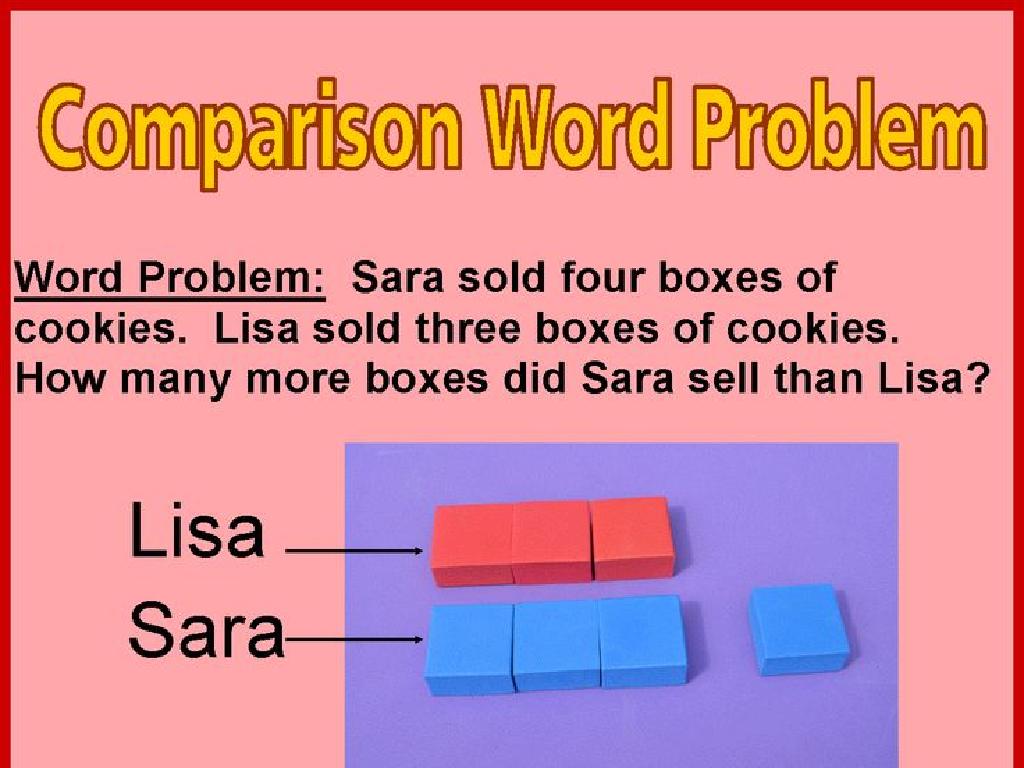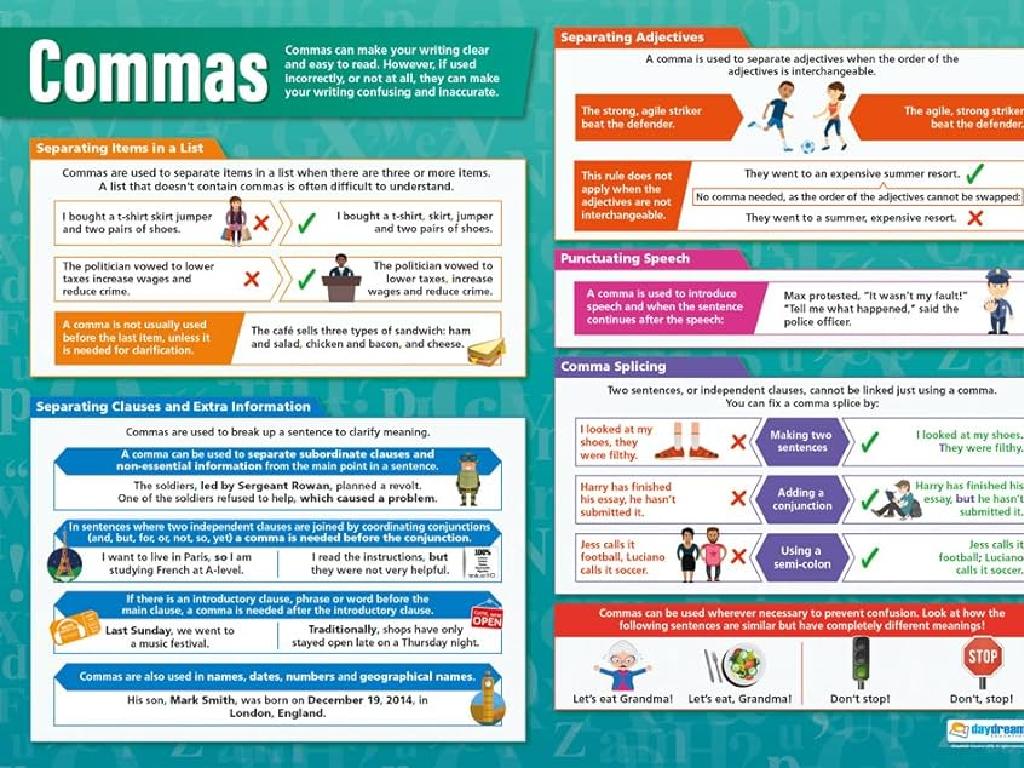Classify Matter As Solid Or Liquid
Subject: Science
Grade: Second grade
Topic: States Of Matter
Please LOG IN to download the presentation. Access is available to registered users only.
View More Content
Exploring Solids and Liquids
– Matter makes up everything
– Solids: Hard and keep shape
– Examples: Rocks, chairs
– Liquids: Flow and take shape of container
– Examples: Water, milk
– Observing solids and liquids
|
This slide introduces the concept of matter and its states to second-grade students. Begin by explaining that matter is anything that takes up space and can be touched, seen, or felt. Then, differentiate between solids and liquids: solids have a fixed shape and volume, while liquids can flow and take the shape of their container. Use familiar examples like rocks and chairs for solids, and water and milk for liquids. Encourage students to observe and interact with objects in the classroom to identify them as solids or liquids, fostering hands-on learning and reinforcing the concepts discussed.
Exploring Matter: Solids and Liquids
– Matter makes up everything
– Matter is what toys, water, and air are made of
– Matter has different forms
– Like ice (solid) and milk (liquid)
– Today’s focus: Solids & Liquids
– Solids hold their shape; liquids flow
– Understanding solids vs. liquids
|
This slide introduces the concept of matter to second-grade students, emphasizing that everything they can touch and see is made of matter. It simplifies the concept by focusing on two forms of matter they interact with daily: solids and liquids. Solids are explained as objects that maintain their shape, like their toys or a block of ice, while liquids are described as substances that can flow and take the shape of their container, like water or milk. The goal is to help students start recognizing the different states of matter in their environment and understand the basic properties that distinguish solids from liquids.
Characteristics of Solids
– Solids have a definite shape
– Solids have a definite volume
– Atoms in solids are close together
– Atoms are like tiny balls stuck together
– Examples of solids
– Like ice cubes, rocks, and pencils
|
This slide introduces the characteristics of solids to second-grade students. Begin by explaining that solids are one of the states of matter and they have their own shape and volume, unlike liquids or gases. Emphasize that solids do not change shape or volume easily. Illustrate the concept of atoms in solids being closely packed by comparing them to a pile of tiny balls that are stuck together and don’t move apart. Provide tangible examples that children are familiar with, such as ice cubes, rocks, and pencils, to help them identify and classify solids in their everyday environment. Encourage the students to think of other examples of solids and discuss why they fit into this category.
Exploring Solids in Our World
– Solids: Rocks, wood, ice-cream cone
– Think of more solids around you
– Why are these objects solids?
– Solids keep their shape and don’t flow
– Characteristics of solids
– Solids have fixed volume and don’t change shape
|
This slide is aimed at helping second-grade students identify and classify solid objects in their environment. Begin by showing examples of solids such as rocks, wood, and an ice-cream cone. Ask students to look around their homes or classroom to find more examples of solid objects. Encourage them to think about the properties of these objects, such as maintaining a fixed shape and not flowing like liquids. Discuss the characteristics of solids, emphasizing that they have a definite shape and volume. This will help students understand why certain items are classified as solids. Encourage participation by asking students to share their examples and reasoning with the class.
Characteristics of Liquids
– Liquids flow into shapes
– They take the shape of their container
– Liquids fill containers
– They can’t be squished; they stay the same amount
– Atoms in liquids move freely
– They’re not stuck in one place; they slide past each other
– Liquids don’t stack like blocks
|
This slide aims to help second-grade students understand the properties of liquids in contrast to solids. Start by explaining that unlike solids, liquids can change shape to fit inside different containers, but the amount of liquid stays the same – it has a definite volume. Discuss how the atoms in liquids are not fixed in place like in a solid; they can move around, allowing the liquid to flow. Use hands-on examples like water in different shaped containers to illustrate these concepts. Avoid using complex terms like ‘atoms’ and instead use simpler language like ‘tiny pieces’ to describe the particles in liquids. Encourage students to think of examples of liquids they encounter in their daily lives.
Exploring Liquids in Our World
– Common liquids: water, milk, juice
– Think of more liquids around you
– Maybe drinks, rain, or things in bottles?
– Liquids flow and take shape of container
– Solids are firm; they don’t change shape like liquids
– Liquids vs. solids
|
This slide is aimed at helping second-grade students identify and classify liquids. Start by showing familiar liquids like water, milk, and juice. Ask students to name other liquids they encounter in their daily lives, such as drinks or rain. Discuss the properties of liquids, emphasizing that they flow and take the shape of their containers, unlike solids which maintain their own shape. Encourage students to think about how liquids and solids are used differently at home and in school. This will help them understand the concept of matter and its different states in a tangible and relatable way.
Solids vs. Liquids: Exploring Matter
– Comparing solids and liquids
– Observing pouring differences
– Liquids flow and take the shape of the container they’re poured into
– How they fill containers
– Solids don’t change shape when moved to a different container
– Solids keep their shape
– Unlike liquids, solids don’t take the shape of their container
|
This slide is aimed at helping second-grade students understand the basic differences between solids and liquids. Begin by explaining that solids are hard and keep their shape, while liquids can flow and change shape. Demonstrate pouring water into different shaped containers to show how liquids take the shape of their container. Contrast this with various solid objects, showing that they remain the same shape regardless of the container they’re in. Encourage students to think of examples of solids and liquids in their daily lives and discuss how these states of matter behave differently when poured or placed in new containers.
Class Activity: Sorting Solids and Liquids
– Sort objects into solids and liquids
– Use observation skills
– Look at the shape and feel of objects
– Discuss your reasoning
– Share thoughts with friends on why it’s solid or liquid
– Learn to classify matter
|
This interactive class activity is designed to help second-grade students understand the concept of matter being in different states, specifically solids and liquids. Provide a variety of objects for the students to handle and sort. Encourage them to use their senses to observe the properties of each item. Is it hard or soft? Does it hold its shape? Can it flow? As they sort, students should discuss with their classmates why they believe an object is a solid or a liquid, promoting critical thinking and use of vocabulary. The teacher should facilitate the discussion, guiding students towards understanding that solids have a fixed shape while liquids take the shape of their container. Possible activities include sorting classroom items, comparing water in different containers, and molding clay to demonstrate how solids maintain shape.
Exploring Solids and Liquids
– Congratulations on learning about solids and liquids!
– Matter is everywhere you look
– Everything you can touch is matter
– Keep exploring and observing
– Notice the state of matter of objects around you
– Stay curious about the world
|
This slide is meant to wrap up the lesson on solids and liquids, reinforcing the concept that matter is all around us. Encourage the students to continue observing the world around them, paying special attention to the state of matter of different objects they encounter in their daily lives. Remind them that solids have a fixed shape and volume, while liquids take the shape of their container. This will help solidify their understanding of the states of matter. Celebrate their achievements in learning these concepts and inspire them to remain curious and inquisitive about science.

